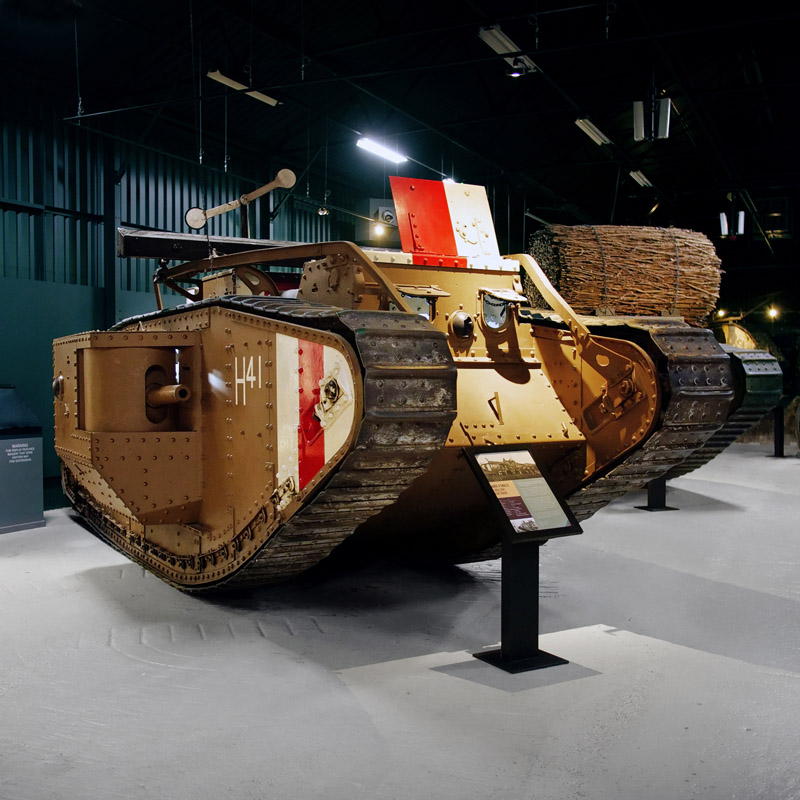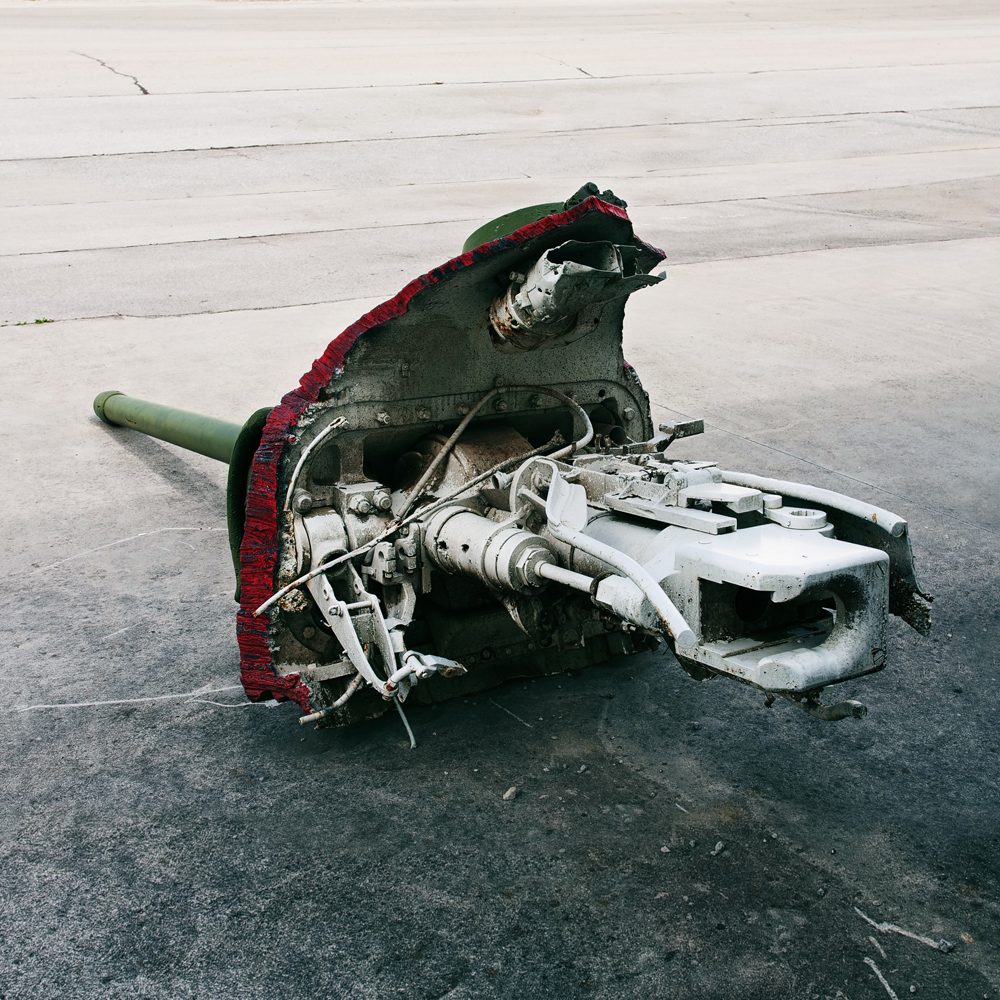Type: Heavy Tank
Nation: United Kingdom
Period: World War 1
Location: The Tank Museum, Bovington, UK

End of the line
Concluding the evolutionary process that had started with the Mark I, the Mark V was the third and last major operational British heavy tank of World War 1. Around 400 Mark Vs were produced until the Armistice of 11 November 1918, plus another 579 of the Mark V* variant – a stretched Mark V which could cross the extra wide trenches which the Germans had intended to counter the British tank threat with. An even longer version was the Mark V**, of which only 25 were completed by the end of the war.
Major rearrangements
While the drivetrain of all previous models had been directly adopted from the crude Little Willie prototype and required four men for driving, the Mark V had new epicyclic gearboxes for each track which enabled the driver to operate the tank all by himself. As the commander no longer needed to assist in steering the vehicle, his position was moved from the front to the enlarged rectangular rear cab. From there he had a much better view of his surroundings, he could signal other tanks with the roof-mounted semaphore device and direct his own gunners via a set of cables linked to mechanical pointers in the sponsons – similar to the indicator system in the German A7V. The rear cab also allowed for the unditching beam to be deployed from a reasonably covered position. The Mark V had two dedicated machine gunners: One stationed at the rear and another one occupying the former commander‘s seat in the front cab. Since it was deemed that this machine gunner didn’t need as wide a field of view as the driver, the left vision port was made distinctively narrower – which is an easy way to tell a Mark V from a Mark IV.
Gasping for air
Another spotting feature of the Mark V are the big rectangular ventilation panels behind the sponsons, through which cooling air was being sucked into the engine‘s radiator. The 150 hp Ricardo engine (named after its young inventor Harry Ricardo) was the world’s first purpose-built tank engine – the previous six-cylinder Daimler had been originally designed to be used in agricultural tractors. Although the new powerplant improved the tank‘s mobility, crew conditions had somewhat become even worse compared with the Mark IV. As the new engine drew air from outside the vehicle instead of the crew compartment, there was virtually no air flow inside. As a result, exhaust fumes would more often than not build up inside and make the crew feel sick or even pass out entirely.
Fragile veteran
This particular vehicle was fighting at the Battle of Amiens with 8th Battalion. This operation marked the beginning of the Hundred Days Offensive that eventually led to the end of World War 1. For his actions on 8 August 1918, the first day of the battle, the tank’s commander Harold A. Whittenbury was awarded the Military Cross. The vehicle continued to see combat on several occasions and on 29 September it was damaged by a German field gun at Bellicourt. In 1925 the Mark V was brought to Bovington where it would be used for parades and demonstrations. The Tank Museum managed to keep it in running condition for many years, but in the 2000s the museum finally decided to retire their Mark V for good – as the first stress cracks had started to appear on the hull. The production number 9199 does not stand for the actual production figures: These unique identification numbers were assigned to different production batches out of sequence to hide the true amount of tanks from the enemy.


5 responses to “Mark V (Male)”
[…] as quickly as possible. Wilson’s sidelined innovation would eventually be implemented on the Mark V – after more than a whole year‘s delay. In total, around 1,200 Mark IVs were built: 400 males, […]
LikeLike
Tank in question was also paraded and ran at the The Royal Tank Regiment Standards Parade, Senelager, W Germany July 1985, where the 1st, 2nd, 3rd and 4th Royal Tank Regiments received their new Standards presented to them by their Colonel in Chief, HM, Queen Elizabeth II.
LikeLike
[…] a mechanical indicator to provide the general direction in which to engage a target. The British Mark V, which was introduced at roughly the same time, only had a much simpler mechanical indication […]
LikeLike
[…] to protect British tank crews by enabling them to “see”. This custom was started in 1917 when a Mark V with a pair of eyes was presented to the British Government by a Malayan council member who had […]
LikeLike
[…] gun turret. And just like all early tanks (including the British rhomboids from the Mark I to the Mark V) the Saint-Chamond was designed to overcome enemy trenches. Its distinctive overhang was supposed […]
LikeLike